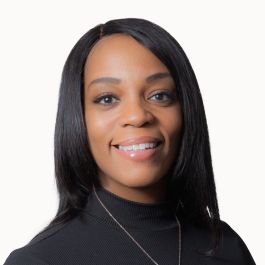And if you look to your right, you’ll see the Tribune Tower.
If you want to see Chicago from the river, there are plenty of architectural boat tours to choose from. Understandably — puttering leisurely through the center of the city is the perfect way for tourists to take in the sublime, towering beauty of its buildings and learn more about the city.
But for the members of Network Perception’s team who are taking in the tour as part of their recent collaboration week in Chicago, there’s a deeper significance. As the tour guide chirps about the historical and cultural significance of the Tribune Tower, their minds flash to evening, when the crown of this grand cathedral lights up and takes its place in the bright Chicago skyline.
“When I think about our mission — protecting critical assets — I think about our beautiful skyline in Chicago and imagine if that was down,” Business Development Representative Shanita Pearson said. “Or I think about hospitals, those on life support and women in the middle of having babies. Those are the critical assets we protect.”
In the era of the Internet of Things (IoT), essential pieces of a city’s infrastructure are already connected to the internet and to each other — which makes them vulnerable to cyber threats. CEO and Co-Founder Robin Berthier started Network Perception with fellow cybersecurity researchers to make sure they’re protected.
“Power stations, power lines, oil and gas pipelines, transportation — all of those industrial systems today have some sort of connectivity,” Berthier said. “It brings greater productivity, but it also brings new cyber risks.”
“I’d say the risk of a power plant or water station going down is higher than if credit card data gets stolen,” added Jeff Schulte, the company’s director of finance. “Getting credit card data stolen is terrible, but people can die if a manufacturing plant goes down. Being able to protect those assets has a lot of value.”
Below, Pearson, Berthier and Schulte go into detail about their meaningful work, a company culture that supports keeping Chicago’s networks safe, and what they want future team members to know about the company.

How did Network Perception start?
CEO and Co-Founder Robin Berthier: It actually started as a research project. I was on track to stay in academia, but I was fortunate to be part of a large research center called Trustworthy Cyber Infrastructure for the Power Grid (TCIPG). I’ve always been passionate about applied research — through TCIPG, we were able to work with industry partners on different research projects from day one. We were able to test a next-generation network visualization and verification solution with medium and large power utilities in the Midwest. The feedback we received from them was really outstanding, which inspired us to branch out of the lab and start a company to maintain and develop this technology further.
Having those industry partners was really key. In traditional academic research, you can work on something for years and it stays theoretical — that relationship we had early on was instrumental to us working on the right problem.
It Started as a Research Project...
What inspired you to sign on with the company?
Director of Finance Jeff Schulte: The product that we're designing has real value. It’s not just an app or a widget that does this or that — it solves real problems and has a real impact. We talk about mission-driven companies all the time — I think it gets thrown around as a buzzword — but our company truly is mission-driven.
In addition, working for a company at this size and stage allows you to have a real impact on the direction of the business. When I started, there were only 10 or 12 people, and there was no finance function, so I’ve really been able to leave my fingerprints on the operational side of things.
Business Development Representative Shanita Pearson: I hold a real estate broker's license. I got involved with Sales Empowerment Group (SEG) so I could learn how to sell in a different way and figured I would work in my real estate business during evenings and weekends. SEG introduced me to Network Perception — upon learning what they did, and why they do it, my whole trajectory changed.
I’m so passionate about helping individuals and families achieve home ownership — nothing is better than handing over the keys to someone and saying “welcome home.” But I started thinking more and more about what would happen if they didn’t have lights or water, or couldn’t get products to their homes, and that changed how I saw my life going.
Learning what Network Perception did changed my whole trajectory.”
What is the culture at Network Perception like?
Pearson: We embody what we sell, and our internal infrastructure is very open to helping all employees near and far — in person or virtually — understand exactly what we sell and why and how we do what we do. Network Perception values collaboration, giving their employees a voice, and providing the proper tools, space and innovative technology to solve problems both individually and collectively. The culture and principles are unmatched and put into practice every day by everyone. It feels great to walk into the office — you can feel an energy of openness and creativity in a way that could never be put into words.
Schulte: We set up a collaboration week where we brought everybody in — we have a lot of remote folks we hired during the pandemic — and getting everybody in the same room to problem solve was amazing. You can see the efficiency gained just from that short week, and real action items came out of it, so we’ve embedded that approach to problem-solving into our culture.
For example, last week, the COO and I were working on something and I said, “Here, let’s whiteboard it out.” There are a lot of examples of that from the last two-and-a-half years. That’s why I really love this job, and why I get up in the morning: that problem-solving capacity.
Berthier: At this size, everyone joining has an impact on the culture. I think we’ve done a really good job hiring folks who are already very much aligned with our values — strengthening the culture, rather than dispersing it in different directions. When we’re hiring, we try to have at least one meeting in person and have lunch or dinner with them, so we can get that chemistry beyond just the interview process.

What’s one thing you want everyone to know about Network Perception?
Schulte: The biggest thing is the people. I love coming into the office to collaborate with our coworkers. I get so energized because the people I’m solving problems with are so smart and driven. The people we bring in are high-quality, and high-caliber and instill our values.
Pearson: Network Perception does a really good job with who they choose to bring in. Diversity in every sense has long been underrepresented in the tech world — so not only are we making an impact with the work that we do, but also on diversity and equity. If we want to truly design and develop more equitable technology, we have to have more technology companies that bring in faces that look like mine.
Berthier: I want to echo what Jeff and Shanita said. This is the place for solving problems together. It’s not easy — we have tough problems as we scale and level up this cutting-edge product — but it’s a real pleasure to be working with a really smart and driven team. The one thing I want people to know is that this is the place to collaborate as a team on impactful and complex problems.











